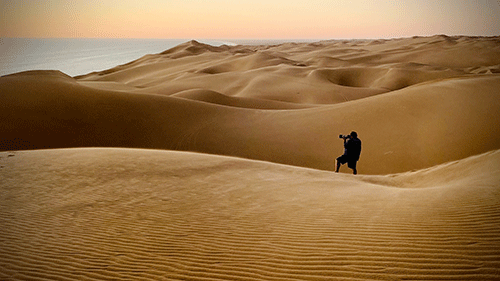Namibia’s tourism sector and its business model, which heavily relies on attracting foreign visitors, has started to show signs of recovery post-Covid-19.
The pandemic restricted movements and caused the closure of borders, which impacted the country’s tourism industry and economy. As a people-oriented industry, tourism is one of the hardest-hit economic sectors.
During 2020, Namibia recorded a drop of over 80% in the hotel and other short-stay occupancy rates. International tourist arrivals declined by 89.4% in 2020 as compared to 2019.
A tourist statistical report stated 1.6 million foreign travellers arrived in Namibia in 2019.
The Hospitality Association of Namibia’s (HAN) executive Gitta Paetzold said when looking at the third quarter of this year, the average of 53,5% occupancy across the country is more than two-and-a-half times better than last year. September recorded an average occupancy of just under 53%, which may be slightly lower than the peak tourism month of August.
However, it is still twice as high as in September last year, which indicates that tourism recovery has doubled since 2021. “We are now just 15% lower than the 2019 figures for the same month,” she added. Last year, the average occupancy was just under 20%, a mere 11% lower than the average occupancy of the third quarter of 2019 before Covid hit.
“All in all, a very positive and encouraging result to see the Namibian tourism recovery advance to this level in this short time-span, and proof that most of our source markets are back in full swing. Central Europe is still our strongest market with over 66%, of which over 35% stem from Germany, Austria and Switzerland, but the French and Italian markets are also prominent, both in August and September,” she noted.
The US market also seems to have recovered well, making up over 4% of the occupancy in September, almost double what it was in 2021.
According to HAN, a noteworthy observation is the fact that the level of occupancy by Namibians in the third quarter stood at 19,5%, which is 3% lower than what it was in 2019.
She attributed the trend to the growing financial constraints felt by Namibians across the spectrum. Some benefits of tourism for host destinations include boosting the revenue of the economy, creating jobs, developing the infrastructure of a country, and facilitating a sense of cultural exchange between foreigners and citizens. The tourism industry saw over 1 000 companies applying for financial assistance during the Covid-19 outbreak.
At the same time, most companies reduced salaries, retrenched and faced liquidation, whereas over 100 tourism businesses closed temporarily or permanently.
Additionally, some 4 300 direct jobs in travel, tourism, hospitality and catering were lost in 2021.
The environment and tourism ministry is spearheading governmental efforts and coordinating with stakeholders for the finalisation of the national Tourism Recovery Plan for 2022 to 2024.
The draft document consists of a framework of identified policy strategic interventions, programmes and activities to be implemented during the recovery period (2022 to 2024).
Some of the strategic interventions include restoring international traveller confidence; building a strong Namibian brand, using multiple advertising platforms; and extending financial support to businesses in the sector.
Furthermore, it includes creating synergy with key stakeholders, promoting and digitalising tourism investment opportunities and developing domestic and African market programmes, as well as adopting aggressive marketing campaigns in international source markets.


